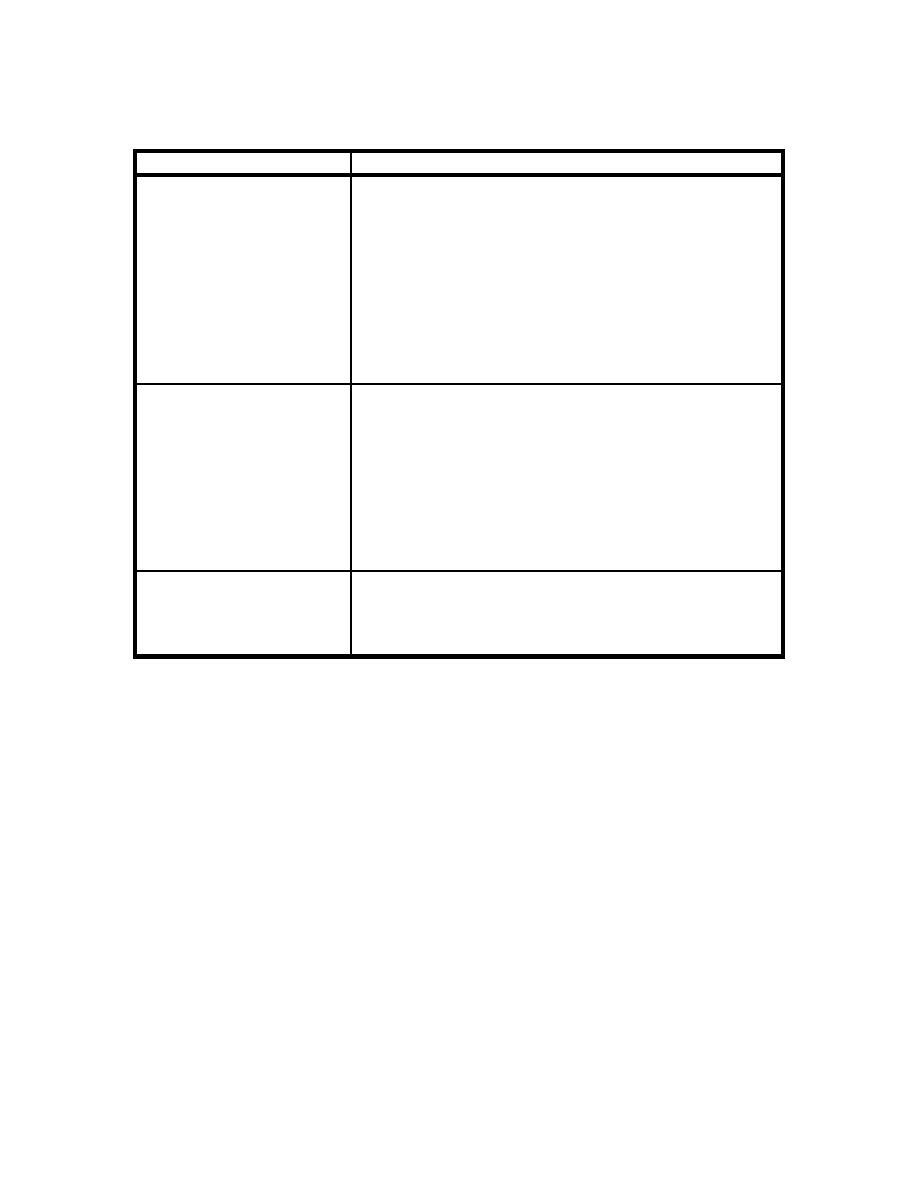
UFC 4-159-03
3 October 2005
Table 6-1. (Continued) Practical Experience With Anchors
ANCHOR TYPE
DESCRIPTION
Driven-Plate Anchors
Extremely efficient, can be designed to hold
extremely high loads and will work in a wide variety
of soils from mud to limestone (NFESC TR-2039,
Design Guide for Pile-Driven Plate Anchors). Can
take loads at any angle, so short scope moorings
can be used. Extensive experience. Requires a
follower and driving equipment. Most cost effective
if a number are to be installed at one site at one
time. Should be keyed and proof tested during
installation.
Deadweight Anchors
Very low efficiency. Full-scale tests (NCEL, Fleet
Mooring Test Program Pearl Harbor) show
anchor-holding capacity dramatically decreases
after anchor starts dragging, just when the anchor
capacity required may be most needed. As a
result, use of this type of anchor can be dangerous.
Deadweight anchors should be used with caution.
NFESC TR-6037-OCN provides an Improved Pearl
Harbor Anchor design.
Other anchor types
NCEL Handbook for Marine Geotechnical
Engineering gives extensive technical and practical
information on a wide variety of anchors and
soil/structure interaction.
A summary sheet describing the stockless anchors in the U.S. Navy Fleet
Mooring inventory is given in Table 6-2. NAVMOOR anchors in inventory are described
in Table 6-3.
117



 Previous Page
Previous Page
